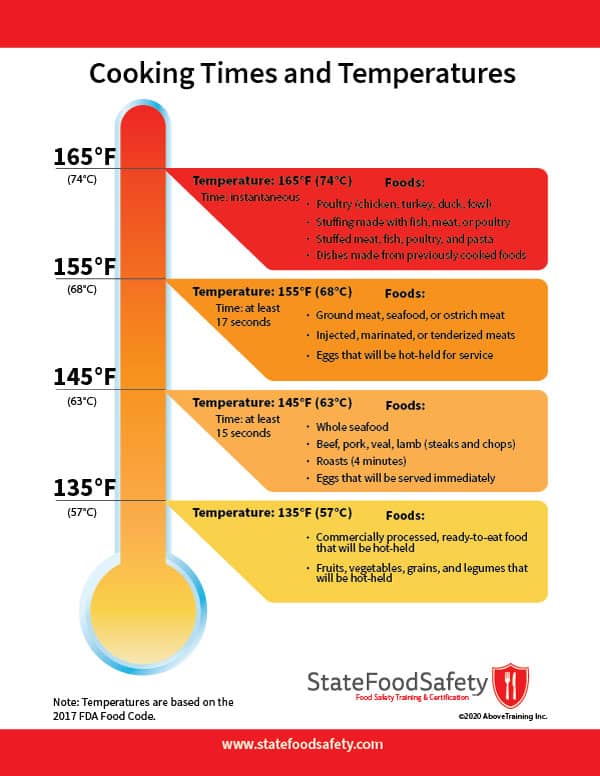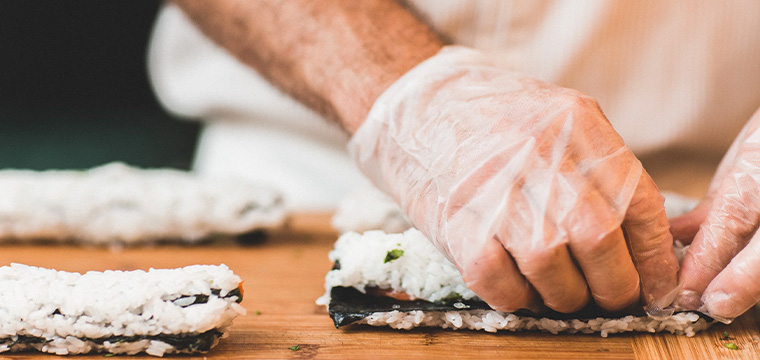Proper food handling is a top priority for restaurants to serve delicious food customers can safely enjoy. Learn about updated food safety practices.
Tips for Handling Food in a Restaurant
According to the World Health Organization, over 1 in 10 people worldwide fall ill from contaminated food each year. To put those numbers into perspective, that’s 33 million people experiencing compromised health from food-borne illness.
And to make things more challenging, the culprits responsible are unseen. When dealing with toxic pathogens like viruses and bacteria, the practices within the kitchen are your best bet to keep these from harming the health of your customers.
The Covid-19 pandemic also affected global food preparation and dining habits. Well-cooked clean food makes the transmission of the Covid-19 virus improbable, but even so, customers were still much more concerned with food safety in restaurants.
So, what can a restaurant do to ensure the safety of its customers? Keep reading to learn about the food safety practices you need to adopt in your restaurant.
Before we dive in, let’s have a quick refresher on food safety.
What is Food Safety?
Food safety is about protecting yourself and your customers from the risk of getting food-borne illnesses. This can be done by following proper practices when handling, preparing, or storing food.
Following strict routines is not just essential for restaurant owners, but also a moral responsibility. After all, your guests sure aren’t going to turn into loyal restaurant customers if they feel sick after eating there. And that data backs it up.
In one survey in the U.S., they found 81.4% of people said they won’t go back if they get food poisoning at a restaurant. That makes it a top reason you could lose your customers—for good. So, make sure you’re keeping customers healthy and happy by serving your dishes safely.
How to Practice Food Safety in a Restaurant
By properly following these food safety practices, you minimize the risks of food-related contaminations in your restaurant. When you know the health of your staff and customers is cared for, you can focus on what matters most—serving safe, delicious food.
1. Keep Your Workstation Clean
You might think keeping your workstation clean is an easy decision, but there’s a standard of how often you sanitize and organize. It’s also a key part of running an efficient restaurant kitchen.
Keeping the environment where you handle food clean is your best defence against contamination. How much you use a kitchen tool and gadget will also dictate how often you should clean these, but a general rule of thumb is no more than 4 hours.
If you have the time, you can clean these kitchen tools and gadgets more frequently. Biological studies show that bacteria multiply quickly and can cause harm within just 4 to 20 minutes. Other factors that suggest the speed of contamination are what these kitchen tools and gadgets are for. Raw animal products like eggs and meat have higher rates of causing food-borne illness.
2. Segregate Kitchen Tools and Foods
The next priority for food safety is proper segregation practices. An easy way to manage food segregation is by categorizing it into raw meat, cured meat products, dry meat products, fresh plant foods, dry seasonings, and liquid seasonings.
Remember to keep everything separated, especially the raw meats since this category has the highest probability of containing dangerous pathogens like Salmonella and Escherichia coli.
Use this list below to separate your ingredients correctly:
- Raw meat. Seafood, poultry, pork, and beef
- Cured Meat Products. Cured ham, smoked salmon, and jerky
- Dry Meat Products. Bonito flakes, pork floss, and dried fish
- Fresh Plant Foods. Vegetables, fruits, mushrooms, and herbs
- Perishable Food Products. Baked goods and cooked grains
- Dry Food. Raw grains, dried beans, and dehydrated noodles
- Dry Seasonings. Salt, pepper, dried herbs, and spices
- Liquid Seasonings. Soy sauce, oils, ketchup, mayo, and mustard
Although you can use this as a general guide, remember to familiarize yourself with different ingredients since some might have a unique category. More so, remember to organize food in order of freshness. Use ingredients that will perish first by following the first in, first out rule.
After segregating the food into categories, you assign the kitchen tools and gadgets per category to avoid cross-contamination. And as a bonus, proper segregation practices not only promote food safety, they also minimize costs since you have to throw out spoiled ingredients less often.
3. Cook Food at Appropriate Temperatures
It’s common knowledge that raw meat is considered a risky food. Cook meat at the minimum required internal temperature to eliminate pathogens cleaning alone cannot do. And if you’re unsure, you can refer to this infographic as a guide:

Photo by StateFoodSafety
Some dishes call for raw meat. For cases like these, we suggest you handpick your restaurant suppliers and learn their quality control practices. That way you can source raw meat up to par with food safety standards.
4. Store Food Correctly
Harmful pathogens can also thrive in perishable foods with poor storage. When your perishable ingredients aren’t stored correctly, food poison-causing bacteria can rapidly multiply. So, if you want to preserve the quality of your ingredients, proper food storage practices are a must.
For your reference, you can refer to these food safety storage rules:
- Freeze raw meats and seafood
- Refrigerate foods that perish fast, like bread or cooked grains
- Store foods of the same category together
Remember: You want to use perishable foods immediately instead of storing them. Try to avoid buying or cooking excessive amounts of food since this has higher risks when stored for a long time. And if you do overdo it, make sure to compost excess food waste to promote sustainability at your restaurant.
5. Practice Proper Hygiene & Safety With Staff
Finally, make sure your staff regularly washes their hands properly. An experiment to measure the relationship between hygiene practices and cross-contamination found that 48% resulted from improper hand washing.
You can also make your staff wear face masks or hair nets. Although cooked food is classified as a low risk of contamination, cold and fresh food present higher risks.
In addition, some customers are still acclimating back to pre-pandemic dining habits. Wearing a mask and following Covid-19 safety protocols assures them their dining at a restaurant that looks out for its customer’s best interests.
Taking Food Safety Seriously
It doesn’t take much, but proper food safety practices can help you and your restaurant a lot. Keep staff and workstations clean, segregate ingredients, cook food at appropriate temperatures, store food properly, and of course, follow the recommended food safety protocols.
When you have proper food safety practices, you take care of your staff, your customers, and your restaurant business.
Contact Mosaic Solutions today and let’s talk about how we can take your restaurant to the next level!
